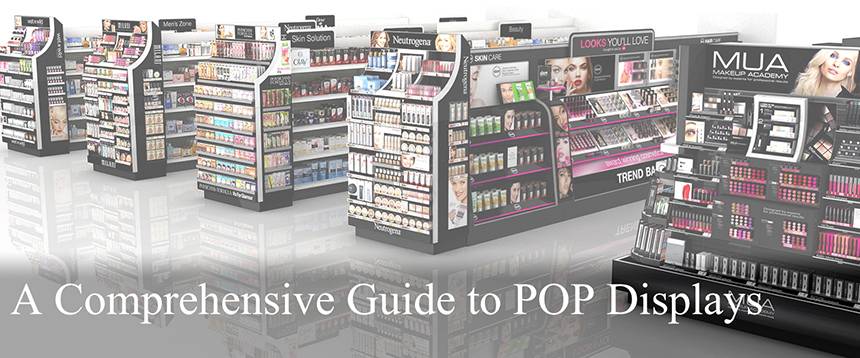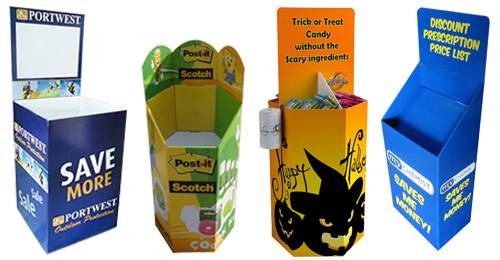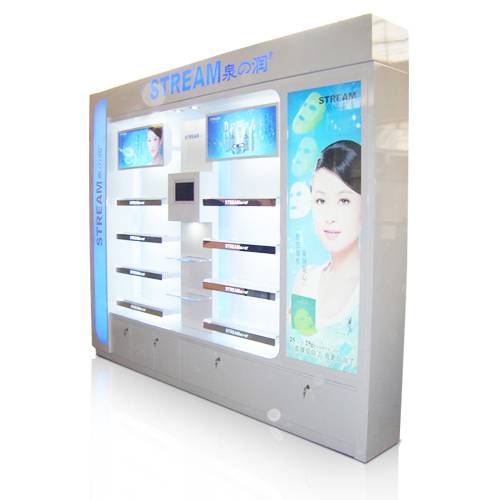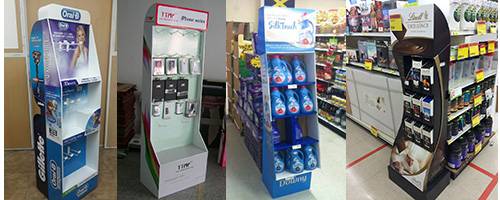A Comprehensive Guide to POP Displays
06/05/2019

Marketers are always focused on finding new ways to reach their audiences. In this digital age, when customers’ attention span has reduced significantly, it has become extremely important for marketers to make an impact in just a few seconds. Marketers, thus, are coming up with new ways of attracting the attention of potential customers. POP displays are an effective tool that marketers use to this purpose.
What Is POP Display?
Point of Purchase, abbreviated as POP, is that section of a store where customers engage with products consciously put up by brands for promotion. Usually, this section is located in close proximity to the checkout zone or any other area of the store where consumers make actual purchasing decisions. POP displays are marketing or advertising materials placed by brands in the POP section. The core idea behind introducing POP displays is to interject a potential customer’s shopping journey in such a manner that the customer feels interested in the advertised product.

In recent years, POP displays have become increasingly popular among advertisers. These days, almost all stores feature POP displays. These displays serve the core purpose of drawing a customer’s attention towards the unique selling points of a product. While POP displays can become pivots of an effective marketing strategy, advertisers must ensure that these displays only accentuate a customer’s shopping experience and do not in any take away from it.
POP and POS Displays Are Two Different Concepts
People often confuse POP displays with POS displays. While both serve the essential function of drawing customers’ attention, advertisers must understand the fundamental difference between these two marketing formats. POS, expanded as Point of Sale, refers to marketing material displayed at the checkout register or any other specific area of a store where actual purchasing happens. POP displays, on the other hand, can occupy any space in a store. This understanding of the difference between the two formats is important to make informed decisions about which format will work to your advantage. POS displays are ideal for those products that customers might buy on an impulse. POP displays, on the other hand, are ideal for expanding a product’s presence and reach.
What Are Some Different Types of POP Displays?
POP displays have become a staple advertising material these days. They are of different kinds. Here are a few different kinds of POP displays that customers come across frequently in stores:
1. Gondola POP Displays: These make the ideal choice when marketers have ample floor space. Gondolas are double-sided adjustable shelves that can easily accommodate products of different sizes. These can be easily customized in terms of size, the material used and color. Most marketers prefer to use gondolas made from steel as they are sturdy and durable.
 2.Display Cases: These are standalone display units made from either wooden or clear acrylic. These POP displays are mostly used to display expensive items as they offer an extra layer of security to the product being displayed. Customers usually have to go through a salesperson to get access to items enclosed in display cases.
2.Display Cases: These are standalone display units made from either wooden or clear acrylic. These POP displays are mostly used to display expensive items as they offer an extra layer of security to the product being displayed. Customers usually have to go through a salesperson to get access to items enclosed in display cases.
3. Banner Stands: These POP displays are perfect for announcing the launch of a new product. They can also be effectively used to highlight the distinctive features of the product being promoted. Banner stands are a popular choice as they are both effective and inexpensive. They can also be easily customized in terms of graphics and size. While using banner stands, marketers must abide by the universal rule: less is more.
4. Endcap POP Displays: Endcap displays are units kept at the end of an aisle. These displays allow marketers to create space wherever needed. Moreover, they create an attractive area within a store where products can be brought to customers’ attention.

Tips for Designing the Perfect POP Display
Now that you are well-versed with POP displays, it is time to design one. Creating effective POP displays is a tricky task. Here are a few tips that will come handy:
1. Less is more: As previously mentioned, when it comes to POP displays, less is more. Marketers must refrain from filling POP displays with product information. Highlight only the most important points and let the customer come seeking for more.
2. Interactive POP displays are a rage: In this day and age of smartphones, people connect more with things that are interactive in nature. Make your POP displays interactive. This way, customers will not only learn about your product, but they will also have fun while doing so.
Now that you know everything there is to know about POP displays, it’s time to bring all this knowledge to practical use. Give your marketing campaign a new boost with a powerful and gripping POP display.
Users Who Viewed Items In Your Recent History Also Viewed



 2.Display Cases: These are standalone display units made from either
2.Display Cases: These are standalone display units made from either 